SONNET155 is a biodegradable bag made using fruit peel as a sustainable alternative to a paper bag
SONNET155 is designed as a sustainable alternative to the everyday paper bag. Conceptualised by the students of Weissensee Kunsthochschule Berlin, Johanna Hehemeyer-Cürten and Lobke Beckfeld, this bag is developed on the principles of circular design.
The bag is created from a composite of two raw materials, cellulose from the textile industry and pectin, naturally occurring in the fruit cells. Pectin helps as a binding agent and could be derived from the peel of the fruit. Both these materials could be sourced locally. The bags would vary depending on the region.
“With SONNET155 we aim for a desirable product, which represents sustainability as a treat rather than a burden,” said Johanna Hehemeyer-Cürten.
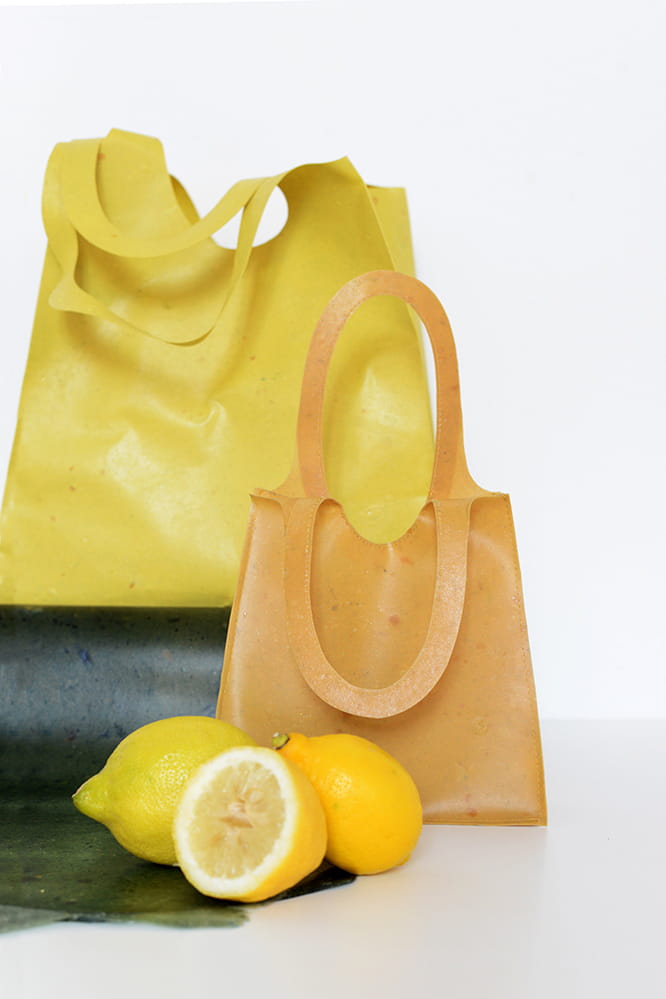

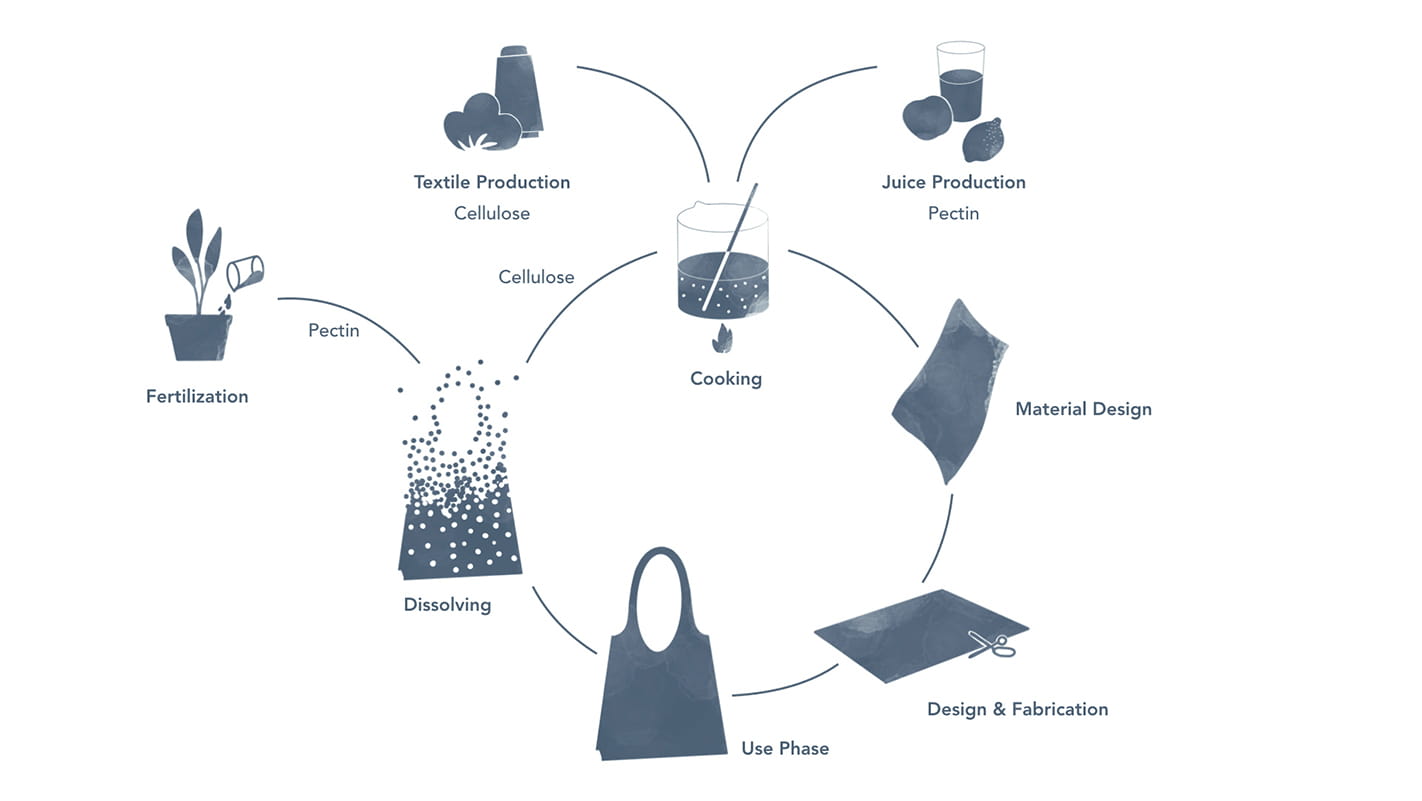

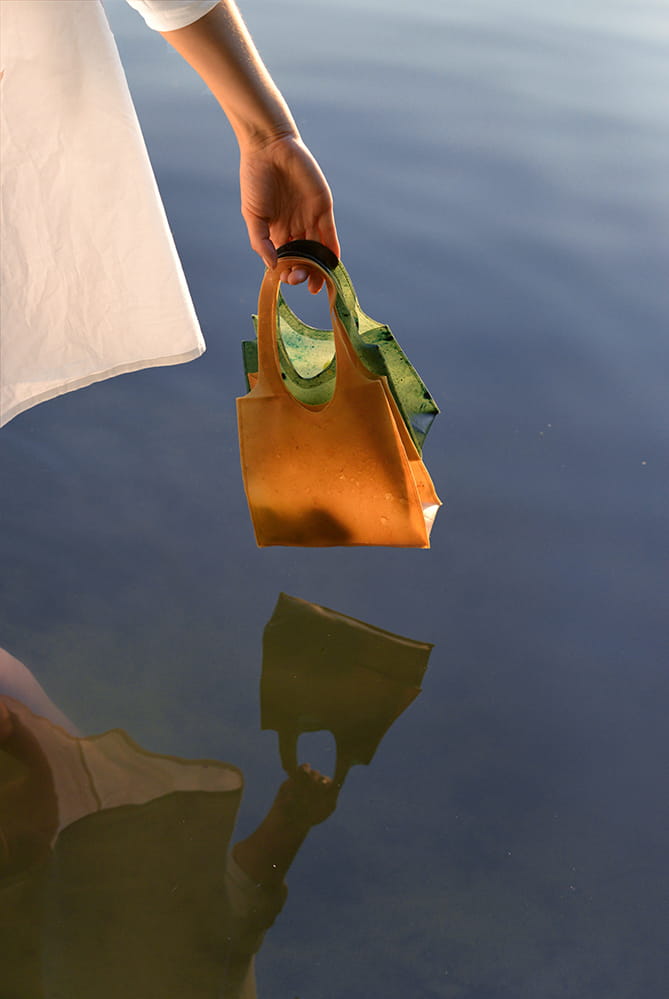
The bag is designed to resemble a tote or a handbag with a lifespan of a regular paper bag which once too worn down, could be dissolved in warm water and the byproducts could be used for a new bag of same quality. To manufacture the bag, the designers combined pectin and reinforced it with cellulose fibers shorter than five millimetres . The mixer is combined with warm water for up to few days in moulds which yields a translucent material with leather-like property.
The composite has a visual and haptic appearance of a translucent leather with the advantage of eventually biodegrading in water or soil. Following that, the designers sew the material together to create each individual bag.
Hehemeyer explains, “SONNET 155 is the upgrade to the ordinary paper bag. It comes in a wide range of colours inspired by the end of summer, the feeling of sun on the skin, exhilarant waters and a gentle wind. Each bag is a one-of-a-kind piece, unique in its gradient pattern, subtly varying textures and vivid pastel colours, which derive from natural pigments.”

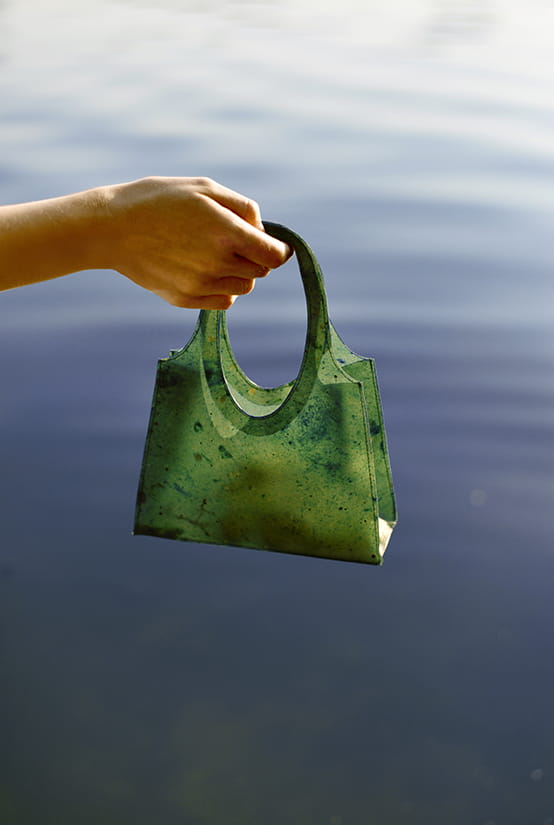
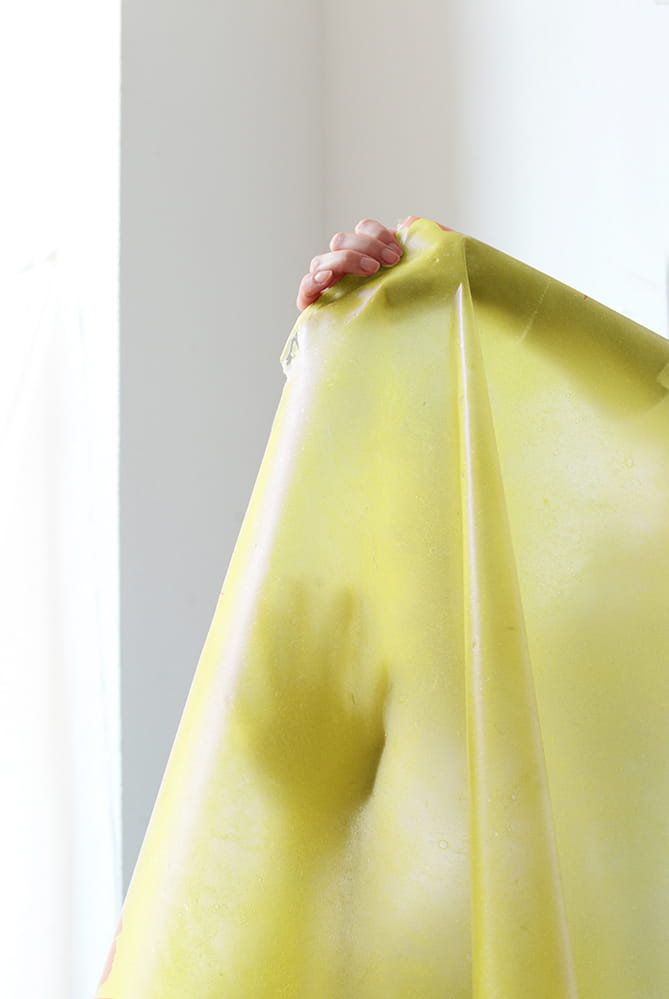
|

|
Depending on the composition of the amount of cellulose and pectin, each bag is aunique piece, with its own pattern, texture and colour. Today, it is widely accepted that carrying your own bag to a supermarket can cut down the use of plastic, as the bag could be used over and over. This project takes this concept a step further by introducing the concept of circular design and using byproducts of two industries to recreate everyday carry bag.


The design of the bag follows a minimalistic approach to enhance its texture and translucence. Thus, the elegant shape transforms the material into a desirable product, which represents sustainability as a treat rather than a burden. The project is currently looking for collaborators and manufactures to bring this bag commercially available. The mass production capabilities and tensile strength of the bag need to be tested for it to become a viably used product.
PROJECT DETAILS
Johanna Hehemeyer-Cürten
MA Fashion Design (weissensee academy of art berlin, GER)
BA Fashion Design (Maastricht Institute of Arts, NL)
https://www.instagram.com/johlemo/
Lobke Beckfeld
MA Textile and Surface Design (weissensee academy of art berlin, GER)
BA Integrated Design (Köln International School of Design, GER)
https://www.instagram.com/lobkebeckfeld/
Product shots: Johanna Hehemeyer-Cürten, Lobke Beckfeld
Portrait: Dominik Mahoche
SUBSCRIBE TO OUR NEWSLETTER

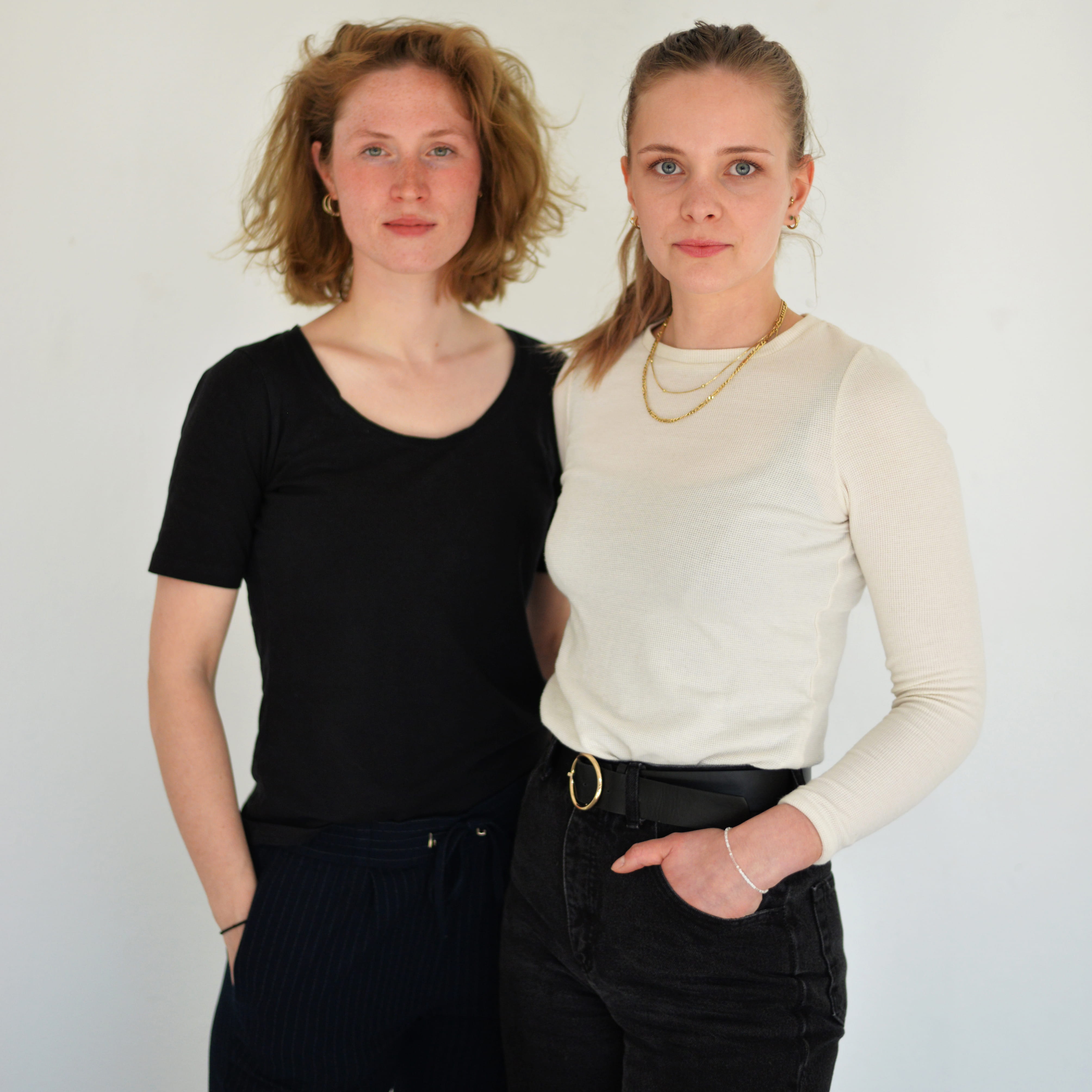

IMAGE GALLERY
SHARE ARTICLE
COMMENTS